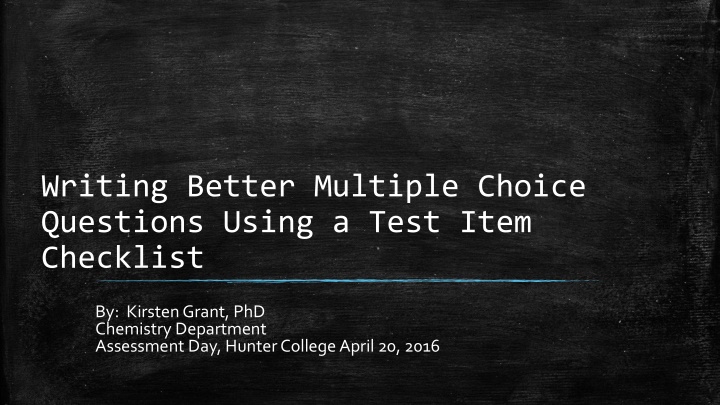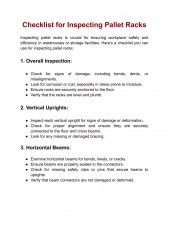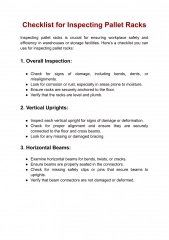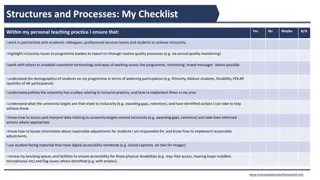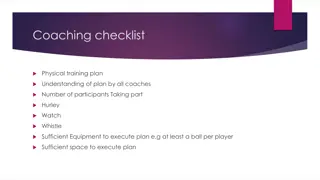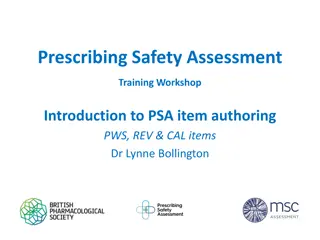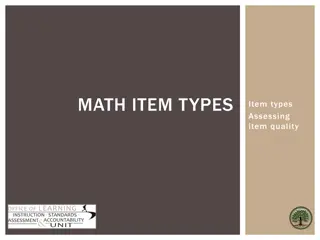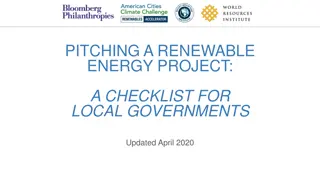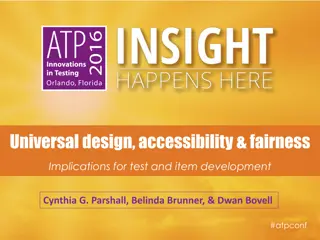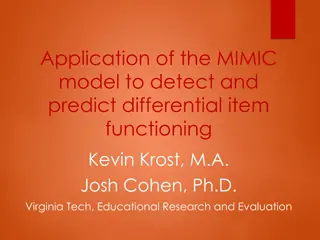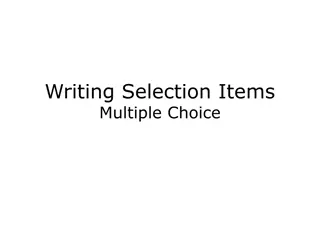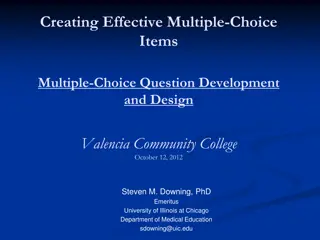Enhancing Multiple Choice Question Quality with Test Item Checklist (TIC)
Exploring the Test Item Checklist (TIC) used in writing multiple choice questions to improve assessment quality, covering criteria assessment and checklist purpose for effective question design in educational settings.
Download Presentation

Please find below an Image/Link to download the presentation.
The content on the website is provided AS IS for your information and personal use only. It may not be sold, licensed, or shared on other websites without obtaining consent from the author.If you encounter any issues during the download, it is possible that the publisher has removed the file from their server.
You are allowed to download the files provided on this website for personal or commercial use, subject to the condition that they are used lawfully. All files are the property of their respective owners.
The content on the website is provided AS IS for your information and personal use only. It may not be sold, licensed, or shared on other websites without obtaining consent from the author.
E N D
Presentation Transcript
Writing Better Multiple Choice Questions Using a Test Item Checklist By: Kirsten Grant, PhD Chemistry Department Assessment Day, Hunter College April 20, 2016
Outline What is the Test Item Checklist (TIC) and its purpose? What does the checklist assess? Test item criteria Examples of poor test questions and fixes References
Test Item Checklist (TIC): What is it and its purpose? Provides a framework for test item evaluation Criteria for making excellent test items Specific learning outcomes provide the basis for developing great test items Necessary for assessing quality of test item Specifically designed for Multiple Choice Tests not our favorite types of test questions, but may be the simplest way to assess student learning in large courses and are most popular
What does the TIC assess? Always remember that each item should be assessing a specific learning outcome the student should be able to The TIC allows for evaluation of each test item based on the following criteria 1. Alignment 2. Language 3. Stem 4. Options 5. Graphics Some items are essential to writing good test questions (**) others are optional (*)
TIC Criteria Alignment How well does the item align with the learning outcome being assessed? Dependent** Exclusive** Misconceptions* Language Refers to all of the language in the test item Stem, options, verbiage, graphs, tables, diagram labels, etc. Clear & concise On student s level Free from cuing No spelling and grammar errors
TIC Criteria Continued Stem Precedes the options (can be a question, incomplete statement, etc. Focused Highest cognitive level possible Avoids use of: Negatives The word you Personal names Cognitive levels also relates to the actual learning outcome Low level outcome merits lower level stem Blooms Taxonomy helpful in writing outcomes 1. Knowledge/remember 2. Comprehension/understand 3. Analysis/apply 4. Synthesis/synthesize 5. Evaluation/evaluate MC items rarely able to achieve levels higher than #4 regardless of words used in stem
TIC Criteria Continued Options Answer choices Only 1 correct answer** Parallel in: Kind Length Complexity All logical All unique Avoids repeated verbiage Graphics Includes images, graphs, diagrams, charts, tables Can be a part of the stem or the options Clear and Concise* Accurate* Provides specific and necessary information*
ExamplePoor Alignment Learning Outcome: Student should be able to use Dalton s Law of Partial Pressures to do partial pressure calculations using the correct # of sig figs. A tank contains helium gas at 490 mmHg, nitrogen gas at 0.75 atm, and neon at 520 torr. What is the total pressure in atm? A tank contains helium gas at 0.64 atm, nitrogen gas at 0.75 atm, and neon at 0.68 atm. What is the total pressure in atm? A) 2.1 atm --Not exclusive students must know how to do pressure conversions A) 2.1 atm B) 0.55 atm B) 0.55 atm C) 1.5 atm C) 1.5 atm D) 1600 atm D) 1600 atm
ExamplePoor Stem Learning outcome: Student should be able classify physical and chemical properties of a substance. A solid substance is subjected to a number of tests and observations. Which of the following test results would be classified as a chemical property of the substance? A) It reacts with base to form water. B) Its density is 1.84 g/mL. C) It tastes sour. D) It is a white-colored solid. A solid substance is subjected to a number of tests and observations. Which of the following test results would not be classified as a physical property of the substance? A) It reacts with base to form water. B) Its density is 1.84 g/mL. C) It tastes sour. D) It is a white-colored solid. --Contains a negative not
ExamplePoor Options and Graphics Learning Outcome: Student should be able to determine the properties of exothermic and endothermic reactions If the reaction shown below is exothermic, the energy level of the reactants is__________. If a reaction is exothermic, the energy level of the reactants is__________ the products. H2+ O2 2H2O A) lower than that of the products B) higher than the activation energy of the reaction C) the same as that of the products D) higher than that of the products A) lower than B) the same as C) higher than Options not parallel in kind or length, and repeat verbiage Graphic is not necessary
References Information for this presentation was adapted from the following session materials provide at the NSTA National Conference, Nashville 2016 Assessment Writer s Workshop by Accelerate Learning- STEMscopes
